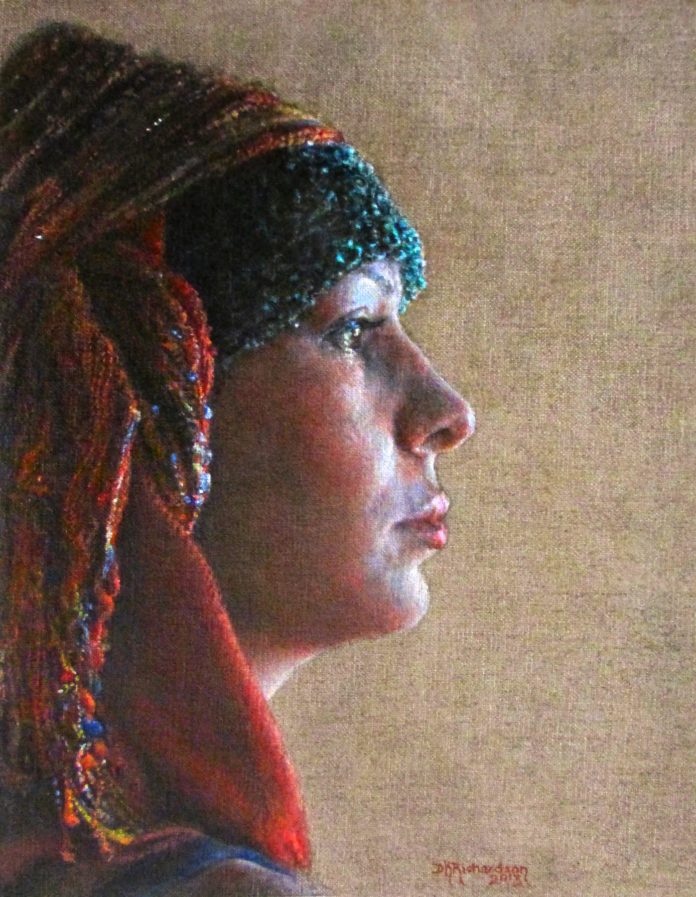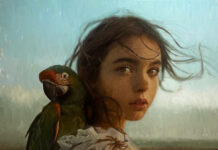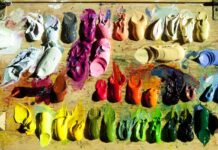Artist D.K. Richardson shares her process for painting portraits, including her underpainting techniques, her preferred varnish, overcoming the challenge of accurate proportions, and more. Enjoy the following exclusive interview (originally published in 2019 but still relevent), and be inspired.
Cherie Dawn Haas: Please tell us about one of your recent portrait painting commissions. How did you decide on the setup, including the pose and background?
D.K. Richardson: The commission was to paint the bridal photo of the client’s wife taken by a studio over 25 years previously.
The first challenge was to increase the size from an 8 x 10 color photo to a 36 x 48 canvas. I scanned the photo, had it printed at an office supply store the actual size of the final painting. I was not happy with the quality of the print. So I decided to tackle it on my own with my printer, which prints 13 x 19. This required saving the image into individual “pages” so to speak, allowing me to print out the image with much higher quality. Then I taped it together.
The next hurdle faced was adding the bottom of the elbow, additional flowers, and part of the image below the waist that did not exist in the original photograph. These changes were critical to the composition for the increase in size.
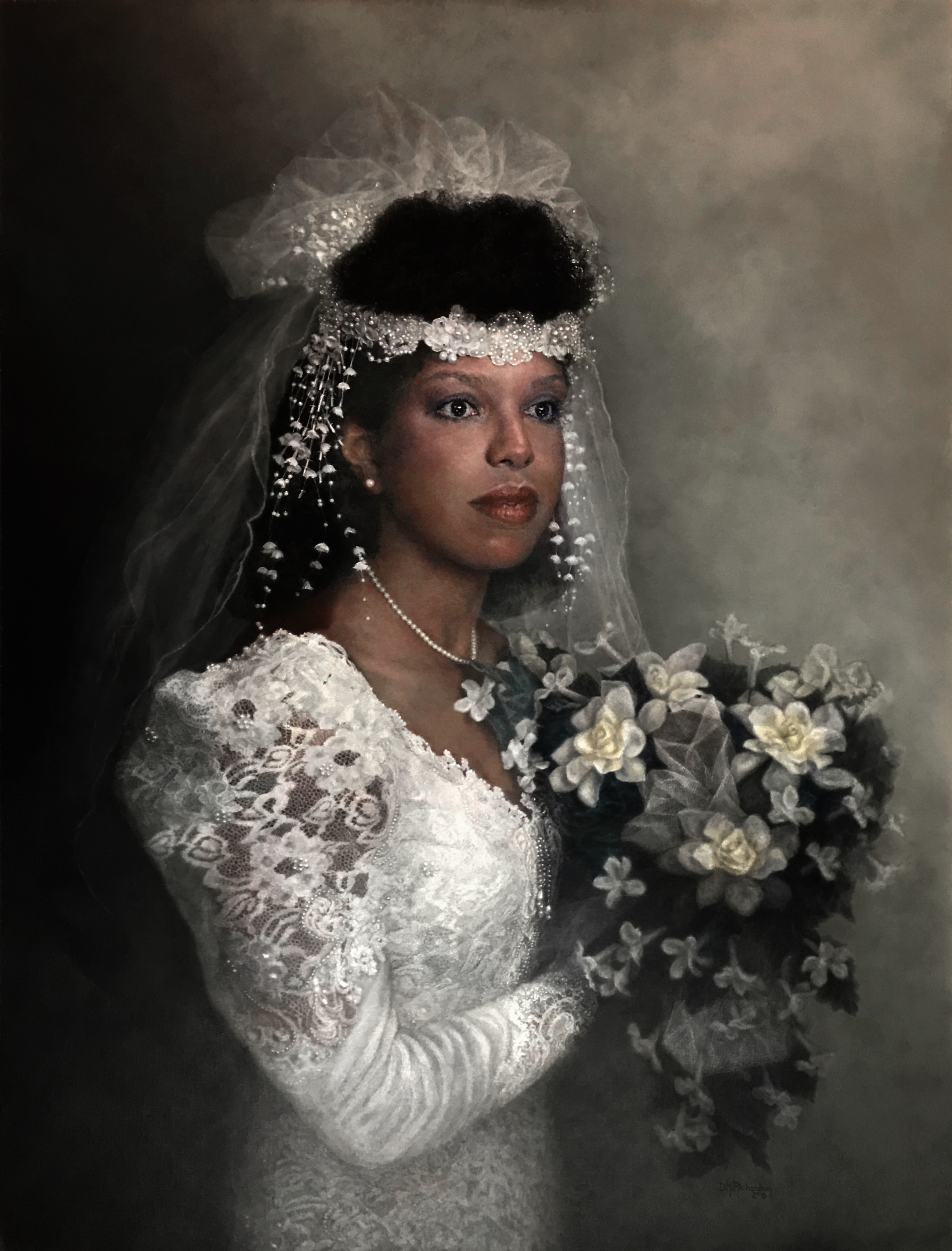
Haas: Can you tell us about your underpainting process? What do you use to create this layer?
Richardson: The painting begins as a drawing with a black colored pencil on canvas that has been mounted on a rigid panel. (I don’t like the bounce of stretched canvas.) The wax in the colored pencil helps it to adhere to the canvas better. (Not as messy as charcoal.)
Next I mix Charvin oil paint: terre verde (green earth), ivory black, and titanium white into a series of values from light to dark — about five values plus some white and black unmixed. To this I add Liquin Original to accelerate the drying time and to enhance the transparency of some pigments that are not naturally transparent or semi-transparent.
When completed, the underpainting looks like a “black-and-white” photograph in greens instead of grays. Once it is dry, I mix color glazed to layer over the underpainting.
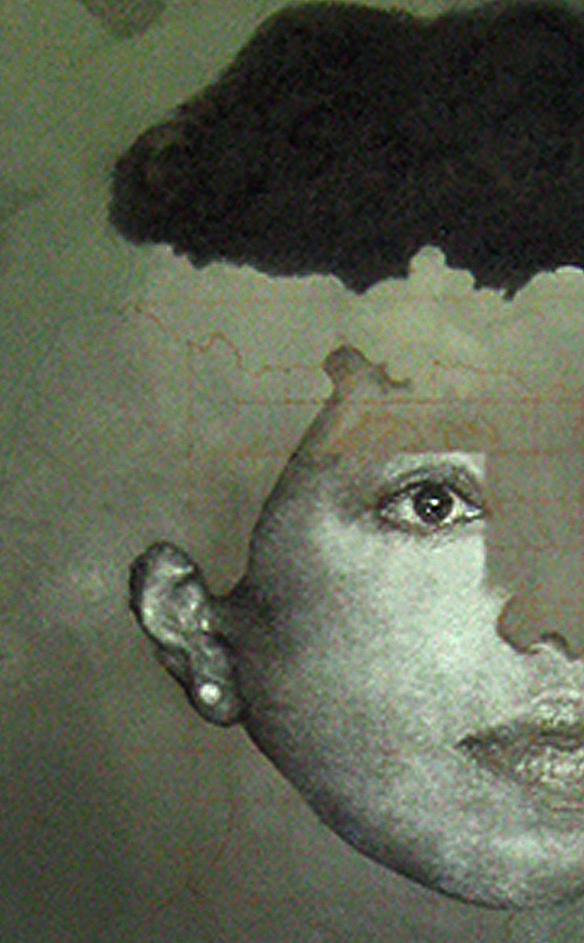
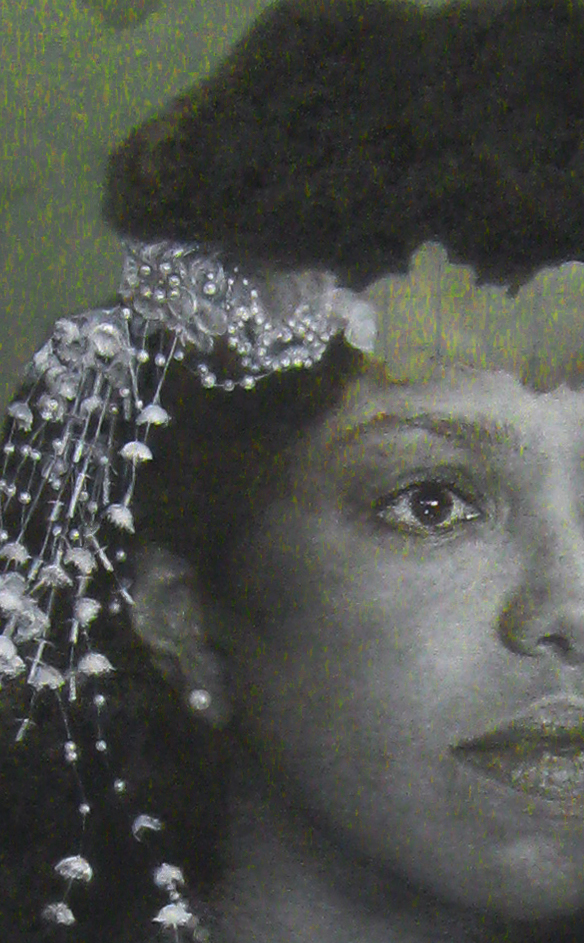
Haas: What varnishes do you use for painting portraits, and what advice do you have for those who’ve never used varnish before?
Richardson: I don’t varnish my work with traditional varnishes. To protect my paintings, I use cold wax medium from Natural Pigments. It was used in Renaissance times by some artists, gives a very subtle luster to the work, and evens out the variations in the sheen. It does not have a high gloss finish like varnish.
It is much easier to control than varnish. It’s removable and gives a nice hard coat to the surface of the painting to protect it. Using this method, I don’t fight the issues of little flecks of dust and lint trapped in the final layers.
Haas: What is your personal favorite painting, one of yours and one by someone else? Why?
Richardson: “Woman with a Tangerine” tops my list of personal accomplishments. I love it because of the translucent quality of the skin and the subtleties that are created in building up thin layers.
Related Article on Painting Portraits, Figures, and Still Life >
Classical Art: A Realist Who Thinks Ahead
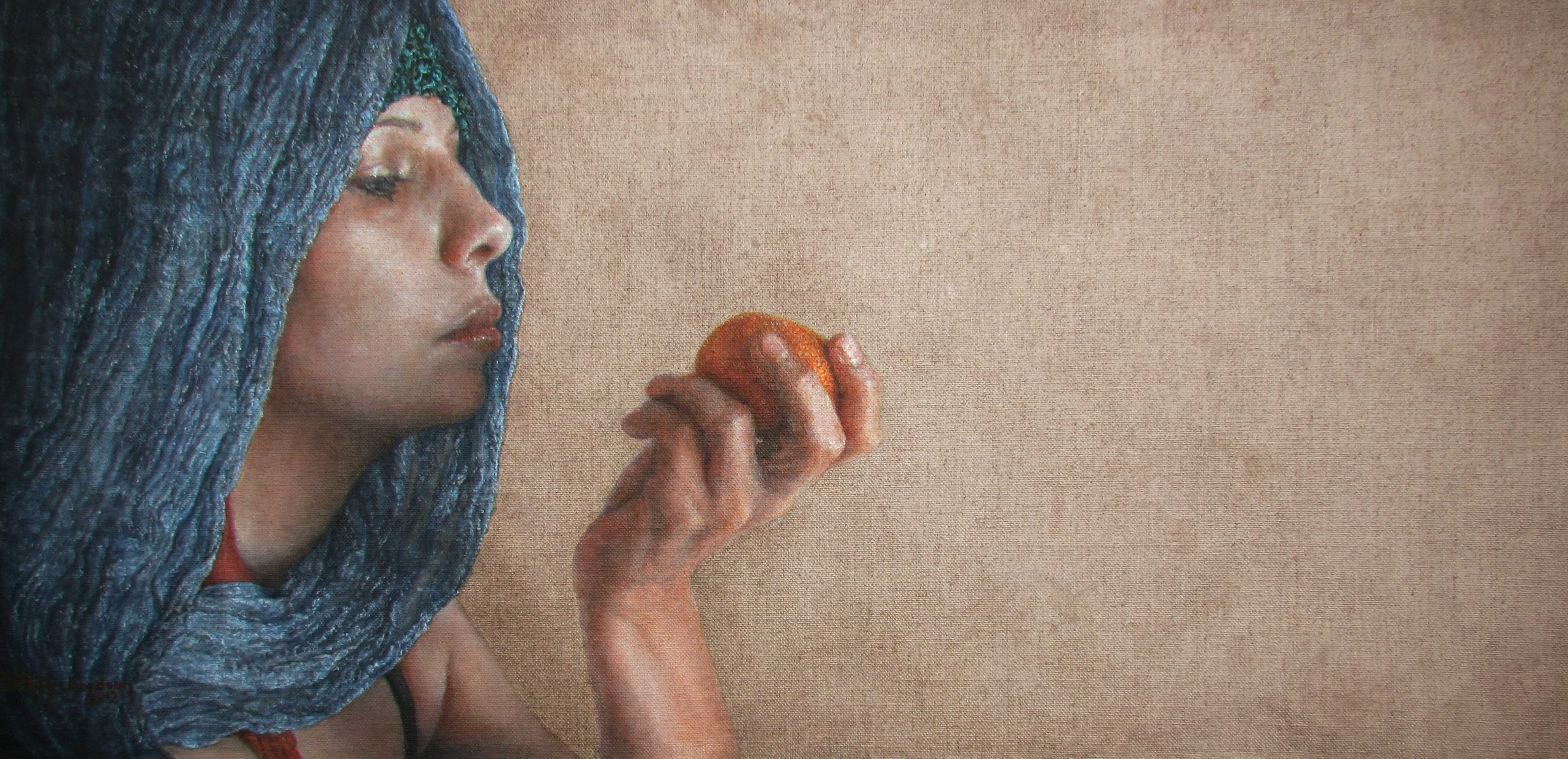
My favorite painting by someone else is Albrecht Dürer‘s “Self-Portrait at the Age of Twenty Eight.” Dürer was a German painter and printmaker of the German Renaissance.
I love the bold composition, which includes his decision on placement of the signature, the lighting, and the transparent quality of the flesh. The contrast of his skin, beard, and hair to the texture of the animal fur is quite interesting and shows the broad range of techniques in the artist’s repertoire.

Haas: What is a challenge you’ve overcome in regards to painting portraits?
Richardson: The most challenging thing about painting a portrait is getting the proportions accurate. I use a grid to get exceptional accuracy and use calipers to measure important areas like the eyes, nose, and mouth placement and sizes. The next most important thing is getting correct light and dark values. Without the accuracy of the values there will be distortions to the features and a lack of three-dimensional qualities.
Haas: Anything else you’d like to add?
Richardson: You actually start any painting with your eye, then your brain. The eye should always win. It tells you the truth about what you are seeing. The brain lies to you and tells you what you want to see or what you believe to be true — not reality. As time goes on, you learn techniques to enhance what your eye is seeing to fool viewers into believing they are seeing a live person.
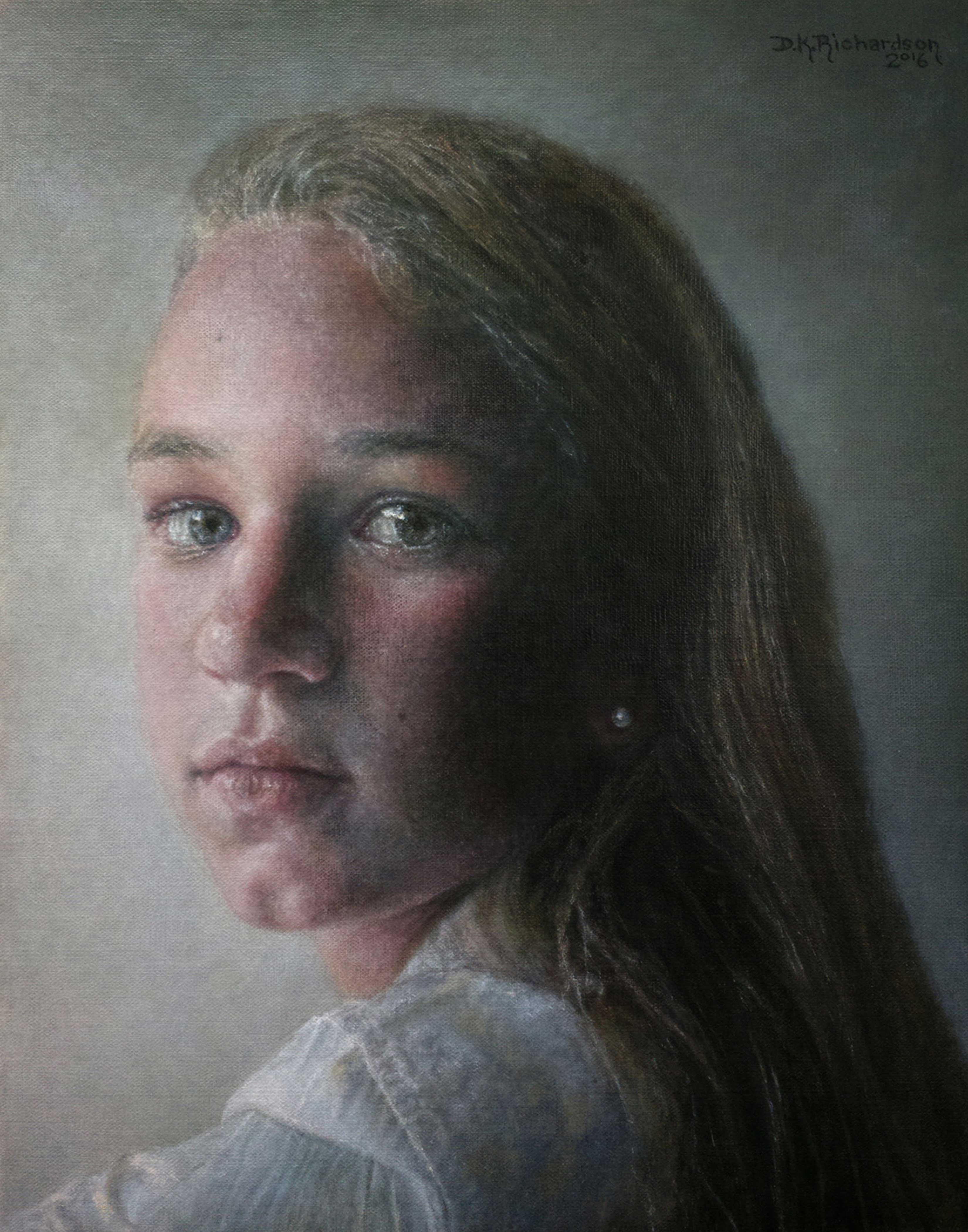
Learn more about the artist and see more paintings at www.dkrichardson-artist.com.


